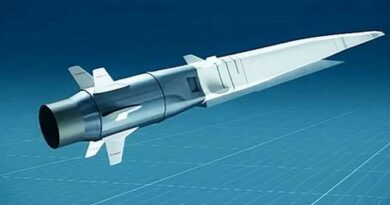Medium Range Surface to Air Missile (MRSAM) Air Defence System
Context:
The Defence Research and Development Organisation (DRDO) conducted two successful flight tests of the Army version of MRSAM at the Integrated Test Range, Chandipur, off the coast of Odisha recently.
About MRSAM:
- The MRSAM is a surface-to-air missile jointly developed by DRDO and Israel Aerospace Industries (IAI) for use by the Indian Army.
- The missile will replace the ageing Air Defence systems of the Army.
- The MRSAM weapon system comprises multi-function radar, mobile launcher system and other vehicles. It has Army, Navy and Air Force variants.
- The mobile launcher can transport, place and launch eight canisterised missiles.
- These can be fired either in single mode or in ripple firing mode in a vertical firing position.
- The missile’s management system uses the radar to track and correctly identify the target, calculates the distance from it and gives all the information to the Commander for a decision to be made on interception.
- The missile itself is 4.5 metres in length with a weight of around 275 kg. It is equipped with fins and canards to stabilise its flight and provide it manoeuvrability.
How is the MRSAM powered?
The missile is powered by a solid propulsion system coupled with a thrust vector control system. The missile can move at a maximum speed of Mach 2 (twice the speed of sound). It can engage multiple targets upto a range of 70 km.
Medium Range Surface to Air Missile
Ø Akash
- Akash is an indigenously developed medium-range surface-to-air anti-aircraft defence system developed by the DRDO
- It was developed as a part of the Integrated Guided Missile Development Programme.
- It has a strike range of 25 km and can carry a warhead of 60 kg.
- It can fly at a supersonic speed ranging from Mach 2.8 to 3.5
- The missile system can target aircraft up to 30 km away, at altitudes up to 18,000 m.
- It has the capability to “neutralise aerial targets like fighter jets, cruise missiles and air-to-surface missiles” as well as ballistic missiles.
- It is in operational service with the Indian Army and the Indian Air Force.
Ø Akash N-G
- Akash N-G (short for Akash New-Generation) is a successor of the Akash missile program.
- It comes with improvements such as Dual-pulse solid rocket motor, a canisterized launcher and an AESA Multifunction targeting radar to improve its probability of kill with smaller ground operations.
- The range increases from the current 40 km to greater than 80 km.
- An active electronically scanned array Multi-Function Radar (MFR) and optical proximity fuze will improve the effectiveness of the missile against target.
- DRDO successfully conducted the first test of the missile on 25 January 2021 from Launching Complex – III at the Integrated Test Range near Chandipur, Odisha.
Ø Trishul
- It is a short-range (500m to 9 km) quick reaction all-weather surface-to-air missile designed to counter a low-level attack developed by India.
- It was developed by DRDO as a part of the Integrated Guided Missile Development Program.
- It can also be used as an anti-sea skimmer from a ship against low flying attacking missiles and also against moving targets.
Long Range Surface to Air Missile (LRSAM)
- LRSAM is jointly designed and developed by Israel Aerospace Industries and DRDO.
- LRSAM is also called Barak 8 missile in Israel meaning lightning in the Hebrew language.
- For both LRSAM/MRSAM (Medium Range Surface to Air Missile) the missile configuration is same.
- For the LRSAM, DRDO has designed and developed Dual Pulse Propulsion System and other safe arm mechanisms for Solid Propulsion system.
- The missile is designed to defend against any type of airborne threat including aircraft, helicopters, anti-ship missiles, and UAVs as well as cruise missiles and combat jets.
- Both maritime and land-based versions of the system are available.
- The LRSAM programme consists of Missiles, MFSTAR (Radar), Weapon Control System, Vertical Launcher unit and Two- way data link.
- All the subsystems of the missile performed as predicted and achieved the desired goal of hitting the incoming target.
- Further Operational Flight Trials (O.F.T) will be conducted shortly from Indian Naval Platform before induction into the service.
Maitri
- The missile project is a next-generation quick-reaction surface-to-air missile (QRSAM) with a lethal near-hundred per cent kill probability under development by DRDO.
- It is a short-range (15 km, 9.3 mi) surface-to-air point defence missile system.
- The missile will fill the gap created by the Indian government’s decision to wind up the development of the Trishul point defence missile system.
- It is believed to be a blend of the French Mica and DRDO Trishul. Maitri will build on the work done by DRDO while developing the Trishul missile, using technology transfer from MBDA to fill technological gaps that led to the failure of the Trishul project.
Spyder
- Spyder (Surface-to-air PYthon and DERby) is an acquired missile system from Israel which is a short-range, quick reaction missile to neutralise enemy targets up to a distance of 15 km and at heights between 20-and-9,000 metres.
- Spyder is, however, shorter than India’s indigenously developed surface-to-air ‘Akash’ missile, which has a strike range of 25 km.
- Spyder is an all-weather missile which has an automatic process of engaging an aggressive aircraft or missile. Besides aircraft and UAVs, it can also neutralise low-level cruise missiles.
Source: Economic Times
You can find many articles on SECURITY (part of GS III) in our website. Go through these articles share with your friends and post your views in comment section.



